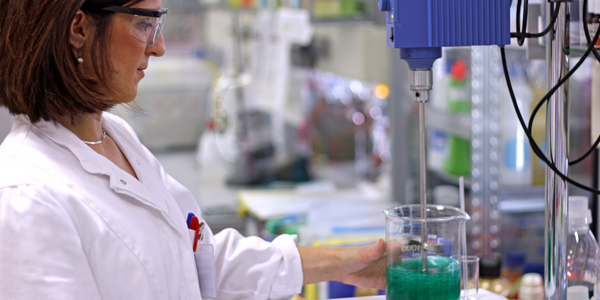Applicable Industries
- Chemicals
Applicable Functions
- Product Research & Development
- Sales & Marketing
Use Cases
- Time Sensitive Networking
About The Customer
Speedo is a globally recognized swimwear brand, known for its innovation and quality. The brand has been leading swimwear innovation for over 80 years and has a strong presence in the competitive swimming market. Speedo's customers range from professional athletes to casual swimmers, all of whom value the brand's commitment to quality, performance, and innovation. The brand's products are used by swimmers in various countries including the US, UK, France, and Spain. Speedo's customer base also includes the world's leading swimmers, who make up Team Speedo.
The Challenge
Speedo, a leading swimwear brand with over 80 years of innovation, was facing a challenge in an increasingly crowded market. The brand needed to reassert its authority, inspire consumers and stakeholders, and drive sales. The challenge was to prove that Speedo is the undisputed leader of competitive swimming, adding aspirational value and reinvigorating the brand’s personality. The company needed a strategy to showcase its new product, the Fastskin LZR Racer X suit, and to highlight the achievements of its team of world-class swimmers, Team Speedo.
The Solution
Speedo implemented an experiential marketing strategy, presenting 'TEAM SPEEDO: THE WINNING ELEMENTS', a group of 24 of the world’s best swimmers. In December 2015, Speedo gathered these athletes, who collectively held 78 Olympic medals and 17 world records, to unveil them to the world’s media. The swimmers stood within an epic installation, measuring 20m by 7m, as the 2016 incarnation of the Fastskin LZR Racer X suit was revealed in New York. The event used spectacular projection mapping to chart each athlete's success. The Fastskin LZR Racer X suit, cap, and goggles, designed by Speedo’s world-renowned Aqualab innovation and research unit, were based on data from extensive 3D scanning and simulations, and in-depth feedback from swimmers, coaches, and swim experts from around the world.
Operational Impact
Quantitative Benefit

Case Study missing?
Start adding your own!
Register with your work email and create a new case study profile for your business.
Related Case Studies.

Case Study
Honeywell - Tata Chemicals Improves Data Accessibility with OneWireless
Tata was facing data accessibility challenges in the cement plant control room tapping signals from remote process control areas and other distant locations, including the gas scrubber. Tata needed a wireless solution to extend its control network securely to remote locations that would also provide seamless communication with existing control applications.

Case Study
Advanced Elastomer Systems Upgrades Production
In order to maintain its share of the international market for thermoplastic elastomers AES recently expanded its Florida plant by adding a new production line. While the existing lines were operating satisfactorily using a PROVOX distributed control system with traditional analog I/O, AES wanted advanced technology on the new line for greater economy, efficiency, and reliability. AES officials were anxious to get this line into production to meet incoming orders, but two hurricanes slowed construction.
Case Study
Wireless GPS Tracking & Security Monitoring
Enhancing the security of hazardous freight and ensuring compliance with Homeland Security’s Transportation Security Administration mandate that all trains carrying chemicals capable of creating a toxic inhalation condition are equipped with on-board safety monitoring systems.

Case Study
Field Device Asset Management For Chemical Company in China
Chinese chemical subsidiary of multinational corporation serves customers throughout the world. Sales offices and research and technology centers are strategically located to provide rapid response to customer requests. Just two workers were assigned to maintain thousands of intelligent instruments in three production units, so they could do little more than react to device issues as they appeared. This costly maintenance method inevitably led to unexpected downtime when a critical instrument failed. Plant management recognized the need to change from reactive to predictive maintenance for all assets, including instruments and control valves, but help was needed in implementing such a technology-based initiative.

Case Study
Industrial Workforce Mobility for Improved Safety & Operations
Huntsman Corporation, a global manufacturer and marketer of differentiated chemicals, undertook an aggressive program to eliminate injuries, product defects, and environmental releases at their Port Neches facility. Termed “Project Zero”, this program required a completely mobile solution to empower operations and maintenance personnel to capture defects, track work progress and make process and safety related decisions in real-time.








